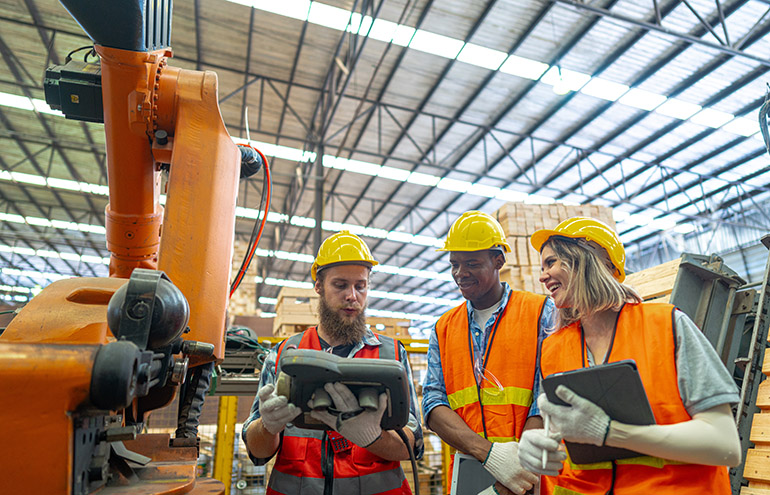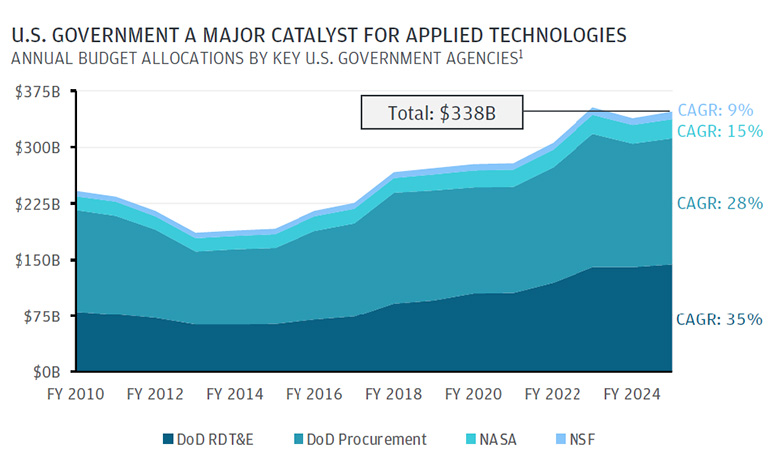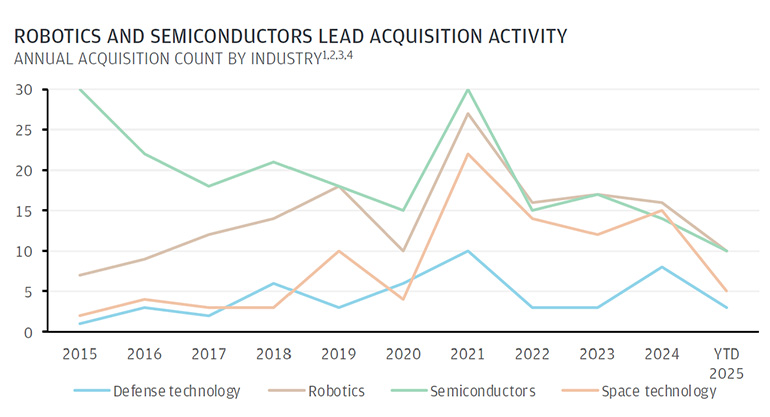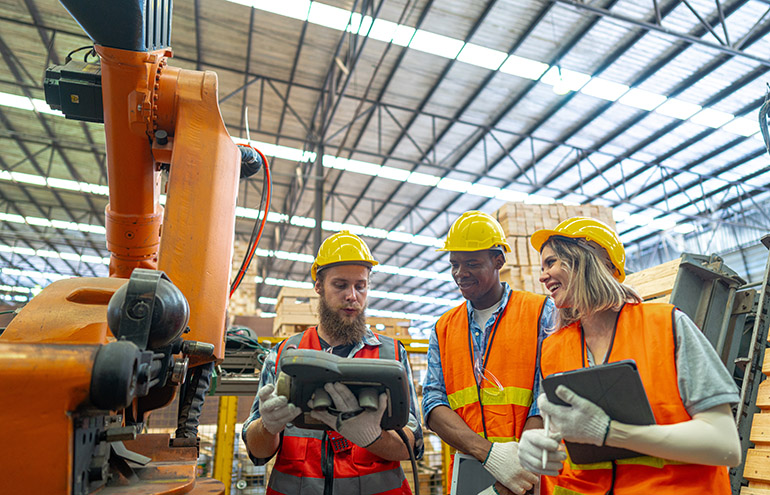
Investments in robotics, semiconductors, space, and defense continue to rise overall, says J.P. Morgan. Source: Adobe Stock
Last week, J.P. Morgan released its “Applied Tech Report,” which focused on trends in robotics, semiconductors, and defense and aerospace technologies. The investment bank also examined the role of federal policy in those sectors.
“Despite facing macroeconomic challenges — including higher interest rates that put pressure on public market valuations — the sector maintains significant long-term growth potential,” wrote Justin Krauss, managing director and head of applied technology, innovation economy, at J.P. Morgan Commercial Banking.
The report observed that initial public offerings (IPOs) and early-stage investments were down or steady, but market consolidation and strategic partnerships demonstrate awareness of applied tech’s long-term potential. Despite cuts in U.S. programs, government funding had grown to $338 billion by fiscal year 2024, even as venture funding had dropped since 2021.
In particular, the U.S. Department of Defense has continued to award contracts to startups, and the CHIPS Act boosted employment in domestic semiconductor manufacturing, according to J.P. Morgan. It also observed that government spending on artificial intelligence research, development, and applications is likely to increase.
Robotics startups are on the rise, despite headwinds
Capital investment in robotics startups rose from about $7 billion in 2020 to more than $12 billion in 2024, reported J.P. Morgan. Many of those deals were for later-stage companies as their valuations rise, it said.
The bank, which has been in business since 1799, attributed this rise to advances in AI and wider demand for automation to boost productivity. Robotics businesses also need more capital to scale than pure software plays.
J.P. Morgan also noted that acquisition activity for robotics and semiconductors has surpassed that for defense and space. However, activity for all of those sectors had dropped over the past year, said the New York-based bank.
J.P. Morgan discusses tech trends
Krauss replied to the following questions from The Robot Report:
Are there particular types of robots and autonomous systems or end-user markets where J.P. Morgan sees stronger or weaker growth?
Krauss: We are seeing strong growth in autonomous systems within industrial settings like manufacturing, supply chain and logistics, as well as automotive and defense.
According to the Bureau of Labor Statistics, there are nearly half a million open jobs in the manufacturing sector – indicating labor shortages is a catalyst for more autonomous systems.
Similarly, there is a growing demand for autonomous systems in defense, particularly for applications like drones and surveillance. These are areas poised for strong growth.
How does robotics complement or follow those other sectors, and how is it different as an investment category?
Krauss: Aerospace, defense, and semiconductors all rely on a virtuous cycle of technological advancement. And, each of those sectors rely on multiple types of robotics technologies layered on top of one another, many of which incorporate AI, to succeed at their respective applications.
From the investment perspective, robotics attracts similar investors to those who also invest in aerospace and semiconductors, which often require large amounts of capital and attract technically skilled founders who are often trained at a handful of engineering Ph.D. programs.
How does federal funding affect early-stage companies and innovation in the U.S. compared with other countries?
Krauss: Federal funding is critical for early-stage companies and innovation in the U.S. Many government agencies continue to increase spending on applied technologies, fostering optimism in the sector.
According to our report, key U.S. government agencies allocated $338 billion to this sector in FY2024. Historical support from agencies has been instrumental in building the robotics industry, and continued investment is essential to maintain U.S. leadership in innovation.
The report revealed that applied tech startups have attracted about 11% of total U.S. venture capital investments in 2024, underscoring the need for continued capital infusion to maintain or accelerate innovation.

The federal government is still a major catalyst for applied technologies. Source: J.P. Morgan
Is J.P. Morgan seeing more consolidation among robotics startups?
Krauss: Funding has become more concentrated, with larger deals increasing overall deal size.
While some consolidation is happening, we’re also seeing strategic acquisitions that illustrate how traditional companies, including many household names, integrate robotics to enhance their products and solutions. The access to capital and compatibility of technologies are key factors in these strategic acquisitions.
Within the report, there’s a slide detailing acquisitions as an “integral piece” of applied tech. It shows that the most likely path of exit for these companies is overwhelmingly acquisitions.

Robotics and semiconductors have been ahead of aerospace and defense in terms of acquisitions. Source: J.P. Morgan
The post J.P. Morgan reports on U.S. investment trends in applied tech appeared first on The Robot Report.

